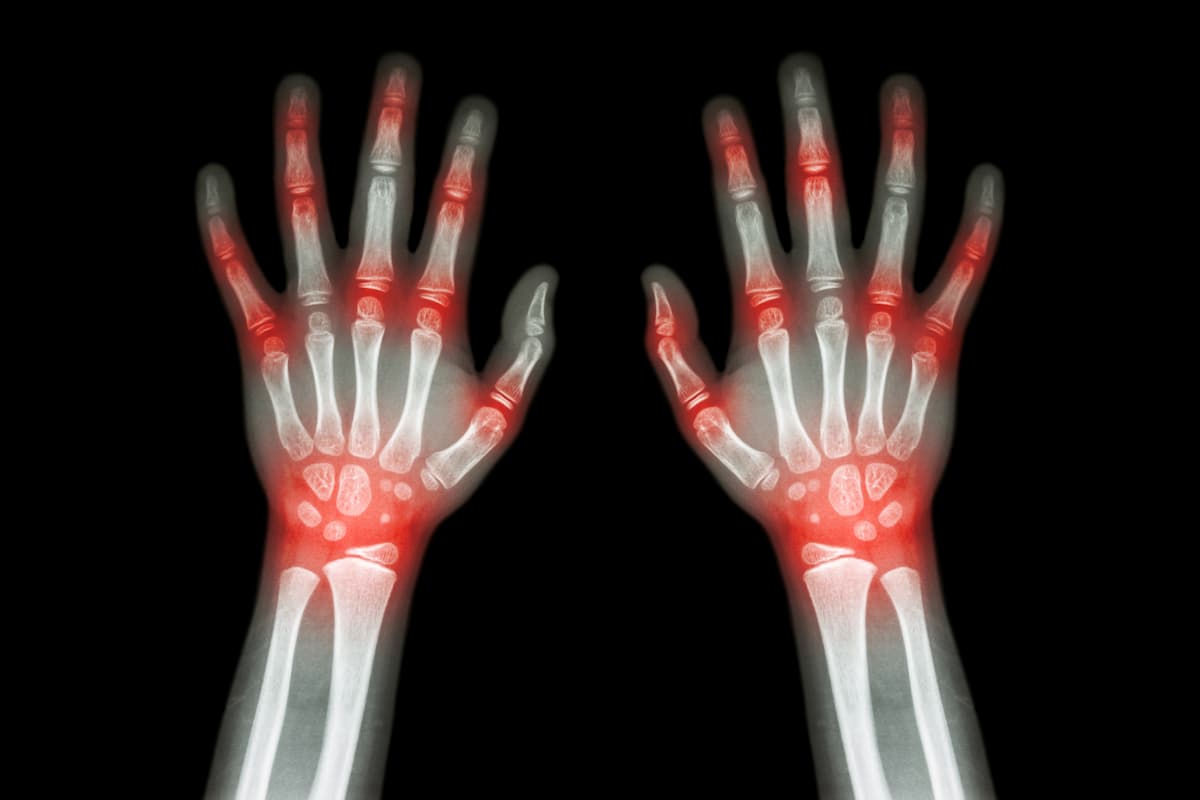News
Article
In Rheumatoid Arthritis, Precision Medicine Remains "Moonshot" Goal
Author(s):
Key Takeaways
- Advances in RA treatment require improved understanding of patient-specific therapy appropriateness, focusing on disease pathogenesis and heterogeneity.
- Current RA treatment algorithms lack biomarkers for selecting molecular targeted therapies, leading to inadequate responses in many patients.
Efforts to more precisely select appropriate therapy for individual patients with rheumatoid arthritis have not yet yielded a clear-cut strategy, a new review finds.
While considerable advances in the treatment of rheumatoid arthritis (RA) have been made, the benefits of those advances will not be fully realized until investigators develop a better understanding of which therapies are most appropriate for particular types of patients, according to a new review.1
The article, which was published in the International Journal of Rheumatic Diseases, calls for a deeper investigation into the disease’s pathogenesis and heterogeneity to facilitate better patient stratification and precision therapy.
While advances in immunology have significantly affected the treatment of autoimmune diseases, “the diversity and pathological mechanisms within each patient are frequently underestimated,” authors Yoshiya Tanaka, MD, PhD, and Satoshi Kubo, MD, PhD, both of Japan’s University of Occupational and Environmental Health, wrote.
The investigators said wide-scale clinical trials will be required to collect and analyze patient-stratification data. At present, they said, achieving true precision medicine in RA remains something of a “moonshot” goal. | Image credit: MicroOne - stock.adobe.com

RA therapy typically involves a stepwise algorithm beginning with methotrexate or conventional synthetic disease-modifying antirheumatic drugs (DMARDS). If methotrexate is ineffective, the second phase of therapy involves a molecular targeted therapy. If that fails, the third phase generally involves trying another molecular targeted therapy.
“In these treatment algorithms, a significant challenge is the absence of appropriate biomarkers for selecting molecular targeted therapies in phase 2 and phase 3,” they wrote. As a result, Tanaka and Kubo said approximately 4 in 10 patients do not adequately respond to their second-phase therapy.
The investigators outlined several strategies for stratifying patients; however, the interplay of genetic and environmental factors in the disease complicates that process. In addition, they said things like socioeconomic factors and the ability to pay for therapy can affect early diagnosis and treatment decisions.
Still, many efforts have been undertaken to find meaningful ways to delineate the disease’s heterogeneity, they said. One important study looked at more than 300,000 synovial cells in patients with RA, Tanaka and Kubo noted. That study’s investigators used hierarchical clustering to identify 6 distinct cell-type abundance phenotypes.2
“These findings indicate that the traditional cell populations considered significant in rheumatoid arthritis do not manifest uniformly across all cases, suggesting that molecular targeted therapies may need customization to effectively address the specific cellular environments in individual patients,” the authors wrote.1
Yet, that study did not delve into the question of which therapy is most appropriate for which subpopulation.
Other efforts have more squarely gotten to the heart of therapeutic choices. The authors noted that the phase 4 R4RA trial stratified patients who had inadequate responses to anti-tumor necrosis factor therapies into 2 groups, based on whether they had high or low expression of B cell–related genes. It found that patients in the B-cell poor group had lower response rates to rituximab, but better responses to tocilizumab.3 However, a separate trial using similar methodology failed to find a clear-cut difference in patient responses. Thus, the investigators said the use of synovial biopsy and transcriptome analysis does not appear to be a definitive predictor of treatment response.4
Tanaka and Kubo said there is more reason to be optimistic around the use of peripheral blood cell abundance phenotypes (PCAPs), which can be identified using flow cytometry analysis.1 The authors were part of an investigator group that published research in February in which patients with RA were stratified into one of 5 PCAP-based groups.5 The authors found that different groups responded differently to targeted therapies, suggesting peripheral blood analysis might help optimize treatment selection.
Still, the investigators said a number of challenges remain to achieving true precision medicine. “Currently, it is difficult to develop treatment strategies that comprehensively take into account the immunological background of individual patients,” they wrote.1
Even when such analysis is attempted, the process is time-consuming and impractical for everyday clinical practice.
The investigators said wide-scale clinical trials will be required to collect and analyze patient-stratification data. At present, they said, achieving true precision medicine in RA remains something of a “moonshot” goal.
“Despite the difficulties, it represents one of the most crucial endeavors in contemporary medical science, aiming to significantly enhance patient outcomes and overall quality of life,” they concluded.
References
- Kubo S, Tanaka Y. Pursuing Precision Medicine in Managing Rheumatoid Arthritis. Int J Rheum Dis. 2025;28(4):e70239. doi:10.1111/1756-185X.70239
- Zhang F, Jonsson AH, Nathan A, et al. Deconstruction of rheumatoid arthritis synovium defines inflammatory subtypes. Nature. 2023;623(7987):616-624. doi:10.1038/s41586-023-06708-y
- Humby F, Durez P, Buch MH, et al. Rituximab versus tocilizumab in anti-TNF inadequate responder patients with rheumatoid arthritis (R4RA): 16-week outcomes of a stratified, biopsy-driven, multicentre, open-label, phase 4 randomised controlled trial. Lancet. 2021;397(10271):305-317. doi:10.1016/S0140-6736(20)32341-2
- Rivellese F, Nerviani A, Giorli G, et al. Stratification of biological therapies by pathobiology in biologic-naive patients with rheumatoid arthritis (STRAP and STRAP-EU): two parallel, open-label, biopsy-driven, randomised trials. Lancet Rheumatol. 2023;5(11):e648-e659. doi:10.1016/S2665-9913(23)00241-2
- Kubo S, Miyazaki Y, Nishino T, et al. Peripheral blood immunophenotypic diversity in patients with rheumatoid arthritis and its impact on therapeutic responsiveness. Ann Rheum Dis. 2025;84(2):210-220. doi:10.1136/ard-2024-226228



